Beyond Chance: The Hidden Psychology of Random Wheel Decision-Making
Discover the psychology behind using random wheels to make decisions and why our brains find comfort in chance-based tools.
In a world where the average adult makes approximately 35,000 decisions daily, it’s no wonder that many of us seek shortcuts to ease this cognitive burden. Among the most intriguing of these shortcuts is the random wheel—a deceptively simple tool that has evolved from carnival games and classroom activities into sophisticated digital decision-making aids. But what drives millions of people to delegate their choices to the spin of a wheel? The answer lies deeper than mere convenience.
Recent research into user behavior reveals that random wheels fulfill complex psychological needs that extend far beyond their apparent function. These colorful spinning tools have become silent partners in our decision-making processes, addressing fundamental human needs while navigating the increasingly complex landscape of modern choice.
Want to experience the magic of the random wheel first? Click here to visit.
The Cognitive Relief Mechanism
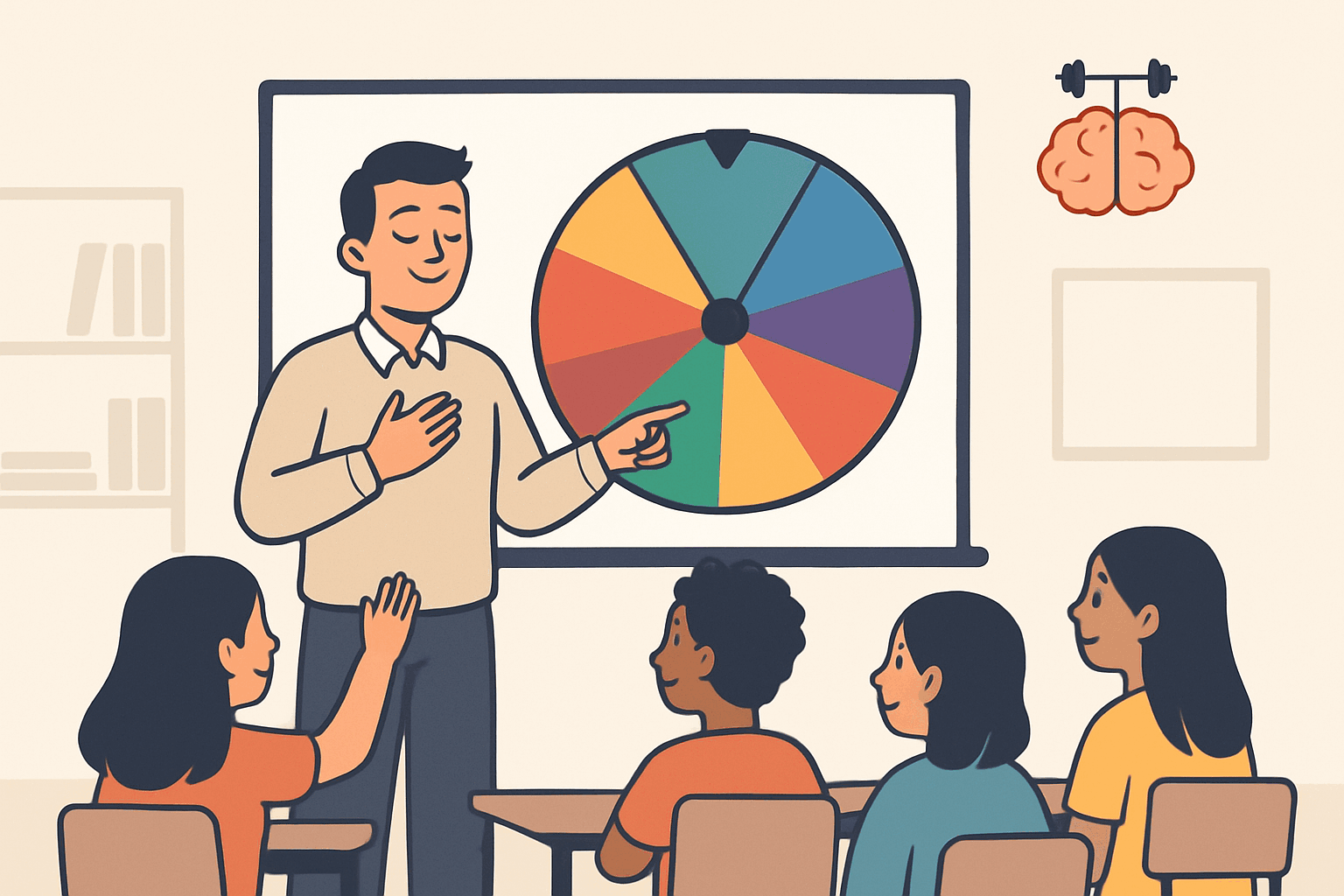
Jessica Thornton, a high school English teacher from Portland, found herself increasingly paralyzed when selecting students for class participation. “I worried about unconsciously favoring certain students or putting others on the spot too often,” she explains. “The anxiety around these small daily decisions was surprisingly draining.” Thornton’s experience exemplifies what psychologists call decision fatigue—the deteriorating quality of decisions made after a long session of decision-making.
For Thornton and countless others, random wheels provide cognitive relief by eliminating the mental taxation of weighing multiple comparable options. This isn’t merely about saving time; it’s about preserving mental energy for decisions that truly matter. A 2018 study published in the Journal of Clinical Nursing defined decision fatigue as “a state of mental overload that can impede a person’s ability to continue making decisions” and found that it affects professionals across numerous fields, from healthcare to education. When researchers at the University of Minnesota studied decision-making patterns, they found that participants who used randomization tools for low-stakes decisions showed significantly less cognitive depletion and made better quality decisions on subsequent complex tasks.
The phenomenon extends beyond professional settings into personal life. Consider the case of Marcus Chen, who developed a custom random wheel for his family’s meal planning. “Before the wheel, deciding what to cook each night became this ridiculous source of stress,” Chen recounts. “We’d spend more energy deciding on dinner than actually enjoying it.” Chen’s wheel transformed a daily point of friction into a moment of anticipation, illustrating how randomization tools can convert decision anxiety into a more positive emotional experience.
This cognitive offloading represents more than convenience—it’s a sophisticated response to the unprecedented decision density of modern life. As Barry Schwartz argued in his seminal work The Paradox of Choice, the abundance of options in contemporary society has transformed freedom of choice from a liberating force into a sometimes paralyzing burden. Schwartz’s research demonstrated that excessive choice can lead to decision paralysis, increased regret, and diminished satisfaction—precisely the issues that random wheels help mitigate. These tools provide an elegant solution to this paradox by maintaining the illusion of choice while removing the cognitive burden of selection.
The Fairness Imperative
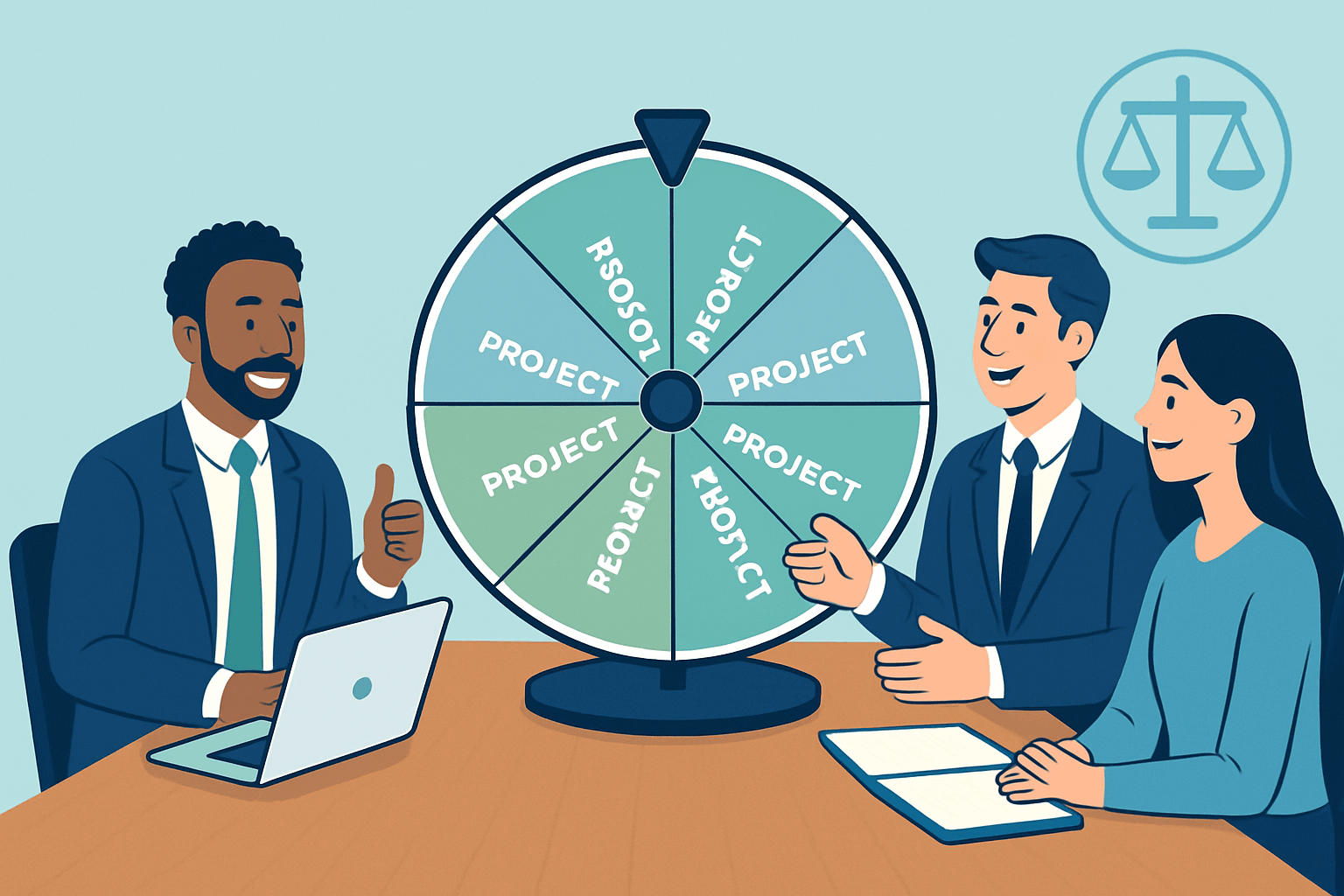
Beyond cognitive relief, random wheels address a fundamental human concern: fairness. The perception of fairness in decision processes often matters as much as the outcomes themselves, particularly in group settings where resources or opportunities must be allocated.
Dr. Amara Wilson, a corporate facilitator who specializes in team dynamics, notes that “random selection tools have become essential in environments where even the perception of favoritism can damage group cohesion.” Wilson describes a revealing case study involving a tech company’s project assignment process. Before implementing a randomized system, team members frequently perceived bias in how desirable projects were distributed. After introducing a transparent random wheel for certain assignments, reported satisfaction with the process increased by 64%, even though some team members still received less desirable projects.
This fairness function is particularly evident in educational settings. A 2023 study published in the Journal of Educational Psychology found that students perceived random selection as significantly more fair than teacher selection, even when the actual distribution of participation was identical. The researchers concluded that “the visible randomness of the selection process satisfied students’ need for procedural justice in a way that teacher discretion could not, regardless of how equitable that discretion might be.”
The fairness imperative extends to self-directed decisions as well. When individuals use random wheels to make personal choices, they’re often seeking to be fair to themselves—to give each option an equal chance without the distortion of momentary preferences or decision fatigue. This represents a sophisticated form of self-regulation, allowing people to overcome short-term biases in service of longer-term values.
The Engagement Paradox
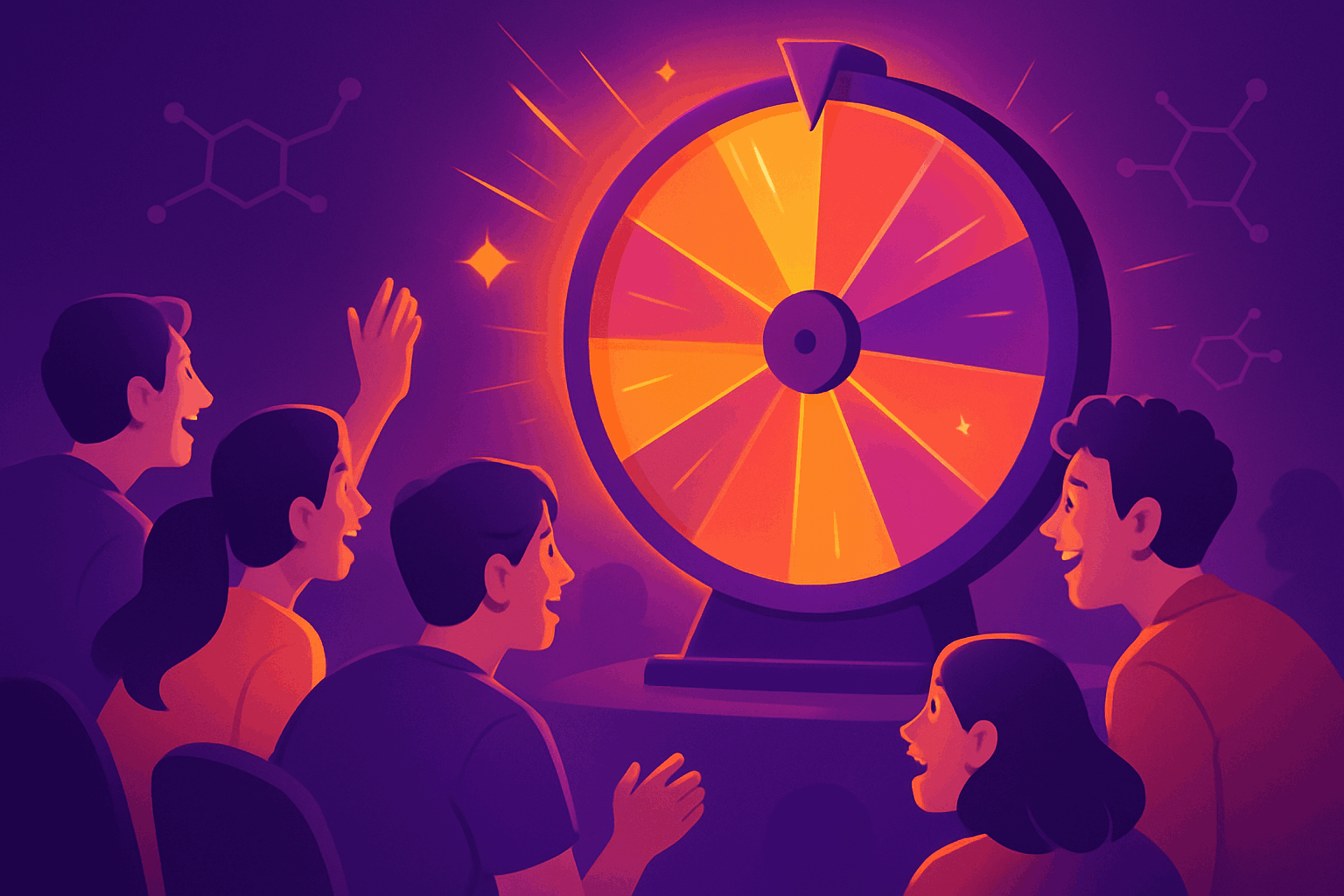
Perhaps counterintuitively, random wheels often make decision processes more engaging rather than less. The element of chance introduces anticipation and excitement into what might otherwise be mundane selection processes.
Event planner Sophia Rodriguez leverages this effect professionally. “When I replaced standard door prize drawings with a giant digital wheel at corporate events, participation increased dramatically,” she explains. “People who wouldn’t bother entering a traditional raffle would eagerly watch the wheel spin, even when the prizes remained exactly the same.” Rodriguez’s observation aligns with research on anticipatory pleasure—the enjoyment derived from awaiting an outcome, which can sometimes exceed the pleasure of the outcome itself.
This engagement effect is neurologically similar to the anticipation created by gambling mechanisms. Neuroscientists have documented that the brief period between initiating a spin and seeing the result activates the brain’s reward anticipation system, creating a small but significant dopamine response. According to research published in Nature Neuroscience, this anticipatory phase triggers activity in the nucleus accumbens, a brain region associated with reward processing. This makes the decision process itself rewarding rather than merely instrumental—a phenomenon that explains why users often spin wheels multiple times even when the first result would suffice.
The engagement paradox reveals something profound about human psychology: we sometimes value the journey more than the destination. Random wheels transform utilitarian decision-making into mini-experiences, adding emotional texture to otherwise forgettable moments of choice.
The Control Paradox
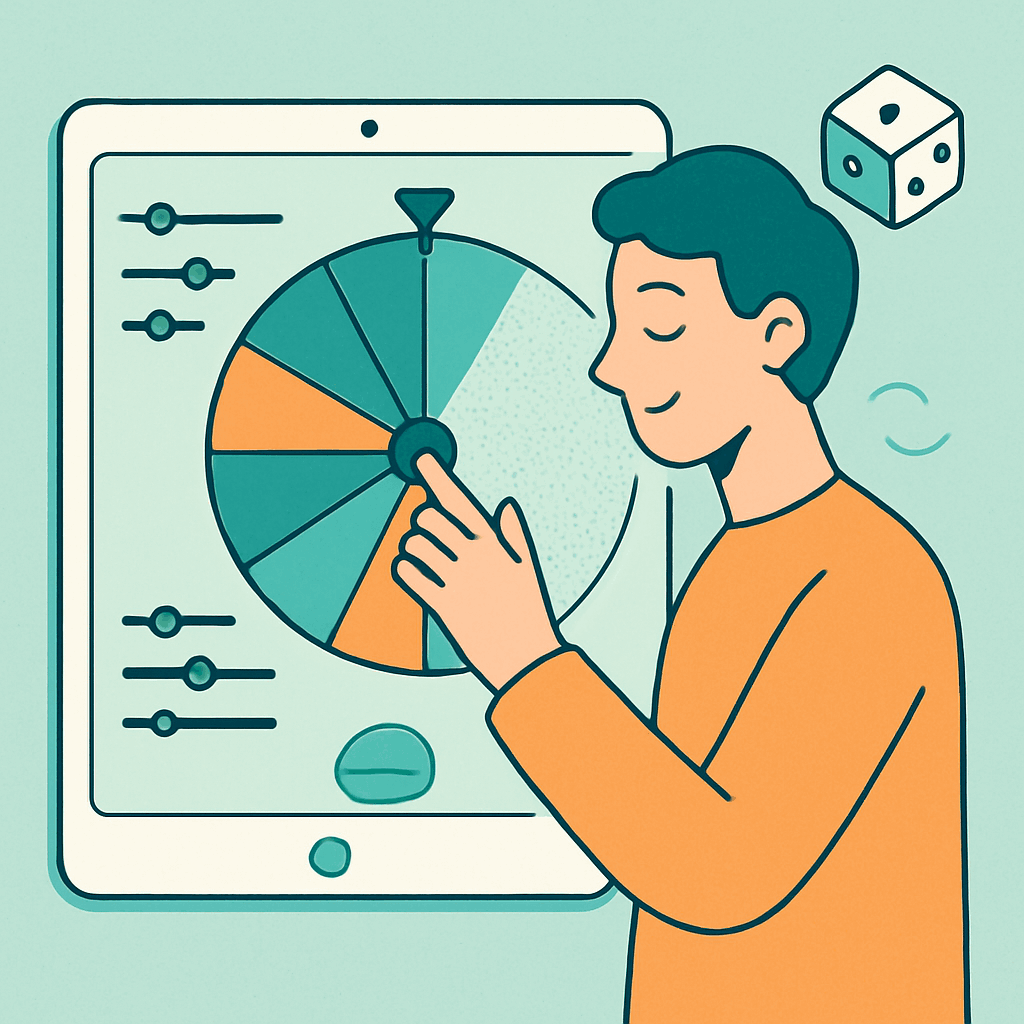
One of the most fascinating aspects of random wheel usage is what might be called the control paradox—users simultaneously seek to relinquish control while maintaining a sense of agency. This seemingly contradictory need manifests in the prevalence of customization features alongside randomization functions.
Consider the experience of Alex Rivera, a product designer who uses random wheels in his creative process. “I’ll spend twenty minutes carefully setting up a wheel with different design approaches, only to let chance decide which one I’ll pursue,” Rivera admits. “There’s something liberating about creating the parameters but surrendering the final choice.” Rivera’s process illustrates how users define the option set (maintaining control) while delegating the selection (surrendering control).
This balance addresses what psychologists call the regret minimization framework—a decision-making approach aimed at reducing anticipated regret. Research by Zeelenberg and Pieters has consistently shown that humans experience more regret when negative outcomes result from their active choices than when the same outcomes occur through chance or external forces. By using a random wheel, individuals transform what would be an active choice (high regret potential) into a passive acceptance (lower regret potential).
The control paradox also explains the popularity of weighted options in random wheel applications. Users want enough control to influence probabilities without assuming full responsibility for the outcome—a sophisticated psychological compromise that balances agency with deniability.
Conflict Resolution and Social Harmony
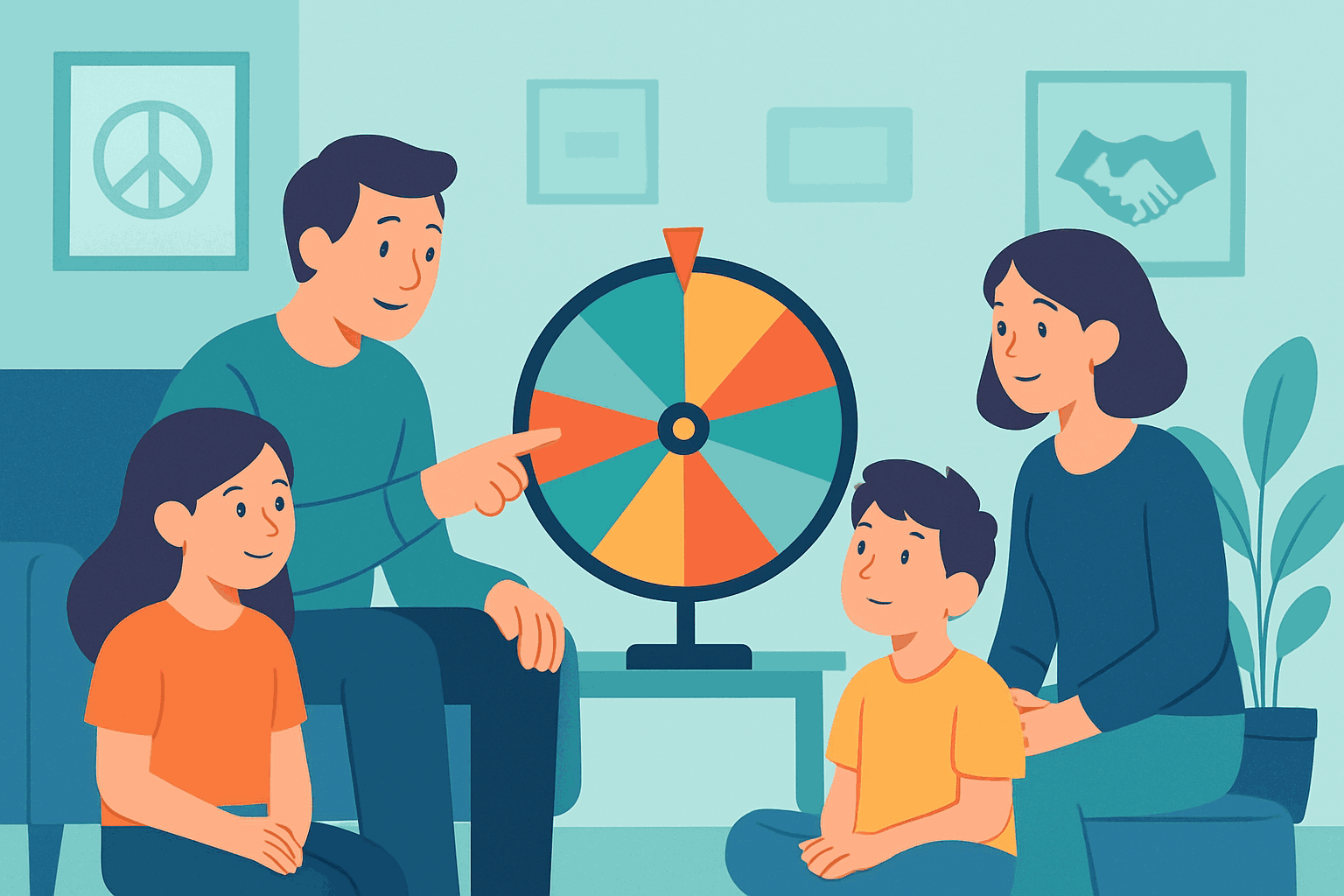
In group settings, random wheels serve as neutral third parties that can resolve conflicts and prevent interpersonal friction. This function is particularly valuable in family dynamics, where decisions about chores, entertainment choices, or resource allocation can become contentious.
Family therapist Dr. James Moreno has incorporated random wheels into his practice with remarkable results. “I worked with a blended family struggling with perceived favoritism in weekend activity selection,” Moreno recounts. “Implementing a family wheel dramatically reduced conflicts because it removed the perception that any parent was favoring their biological children’s preferences.” Moreno notes that the wheel became a family ritual, transforming potential conflict points into moments of shared anticipation.
This conflict resolution function extends to workplace environments as well. Research published in the Journal of Organizational Behavior found that teams using randomization tools for certain resource allocations reported higher levels of cohesion and lower levels of interpersonal conflict compared to teams using manager discretion or consensus-based approaches. The researchers attributed this effect to what they termed “authority displacement”—the wheel becomes an authority that cannot be argued with or accused of favoritism.
The social harmony function of random wheels reveals something important about human interaction: sometimes, removing human judgment from a decision process can paradoxically make the experience more human by eliminating the social tensions that accompany discretionary choices.
Creative Stimulation and Serendipity
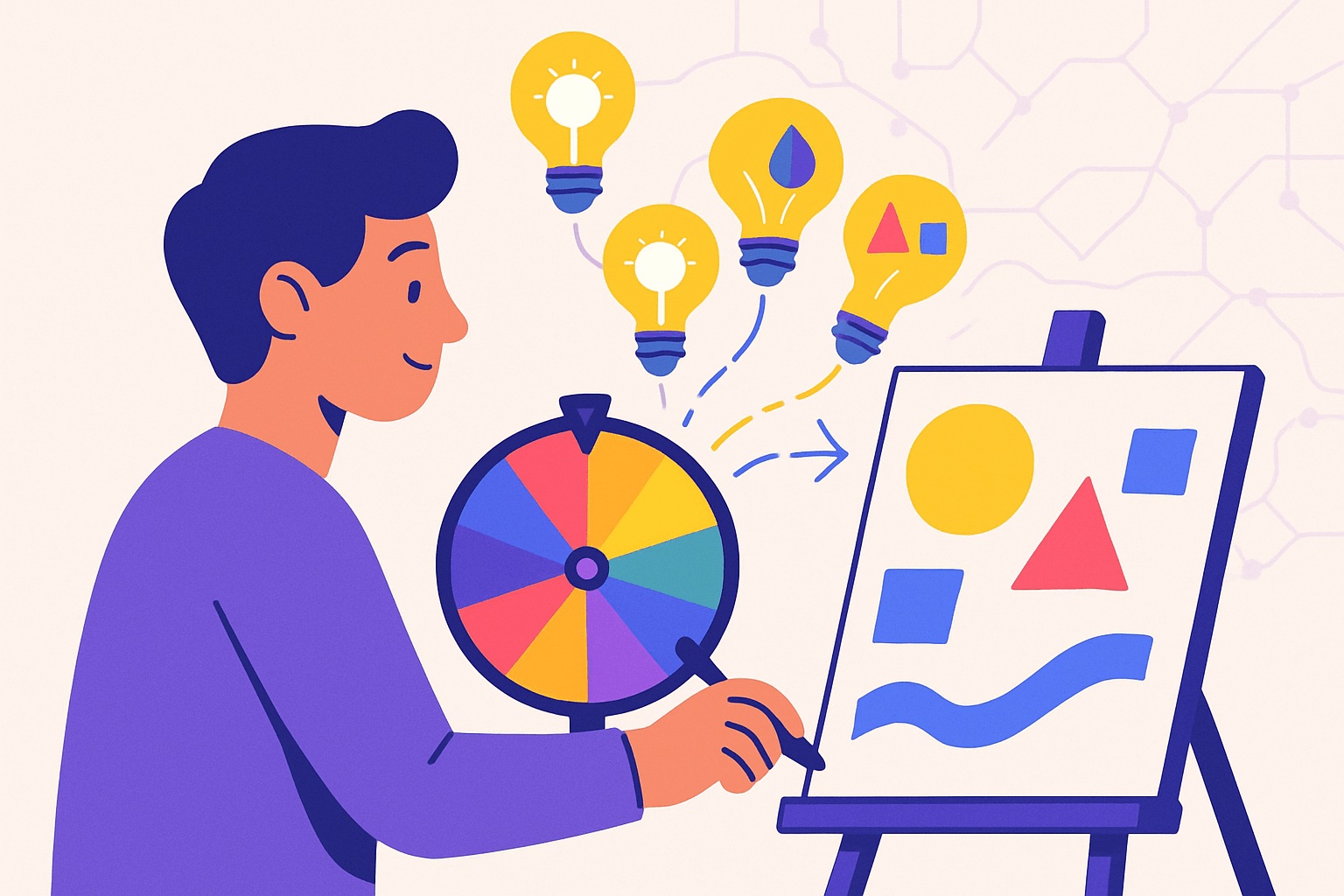
Beyond resolving problems, random wheels serve a generative function by introducing unexpected elements that stimulate creativity and create serendipitous discoveries. This is particularly valuable in creative fields where conventional thinking can lead to predictable outcomes.
Writer Elena Patel developed a custom random wheel containing different narrative perspectives, settings, and conflicts to overcome creative blocks. “When I’m stuck, I spin the wheel and commit to whatever combination it generates, no matter how bizarre,” Patel explains. “Some of my most successful stories came from combinations I would never have consciously chosen.” Patel’s approach exemplifies how randomization can bypass creative fixation and open new conceptual pathways.
This creative application has scientific support. Cognitive research on creativity consistently shows that introducing random constraints or unexpected elements can enhance creative output by forcing the mind to form new associations. A study in the Journal of Experimental Psychology found that introducing arbitrary constraints actually increased creative problem-solving by forcing participants to explore non-obvious solution paths. Random wheels provide a structured way to introduce this productive randomness into creative processes.
The serendipity function extends beyond artistic creation to everyday life. Many users report that random wheels have led them to discover new favorite restaurants, hobbies, or entertainment options they would never have selected through deliberate choice. This suggests that our conscious preferences sometimes limit our experiences in ways that randomization can helpfully disrupt.
Ritualistic Decision Support
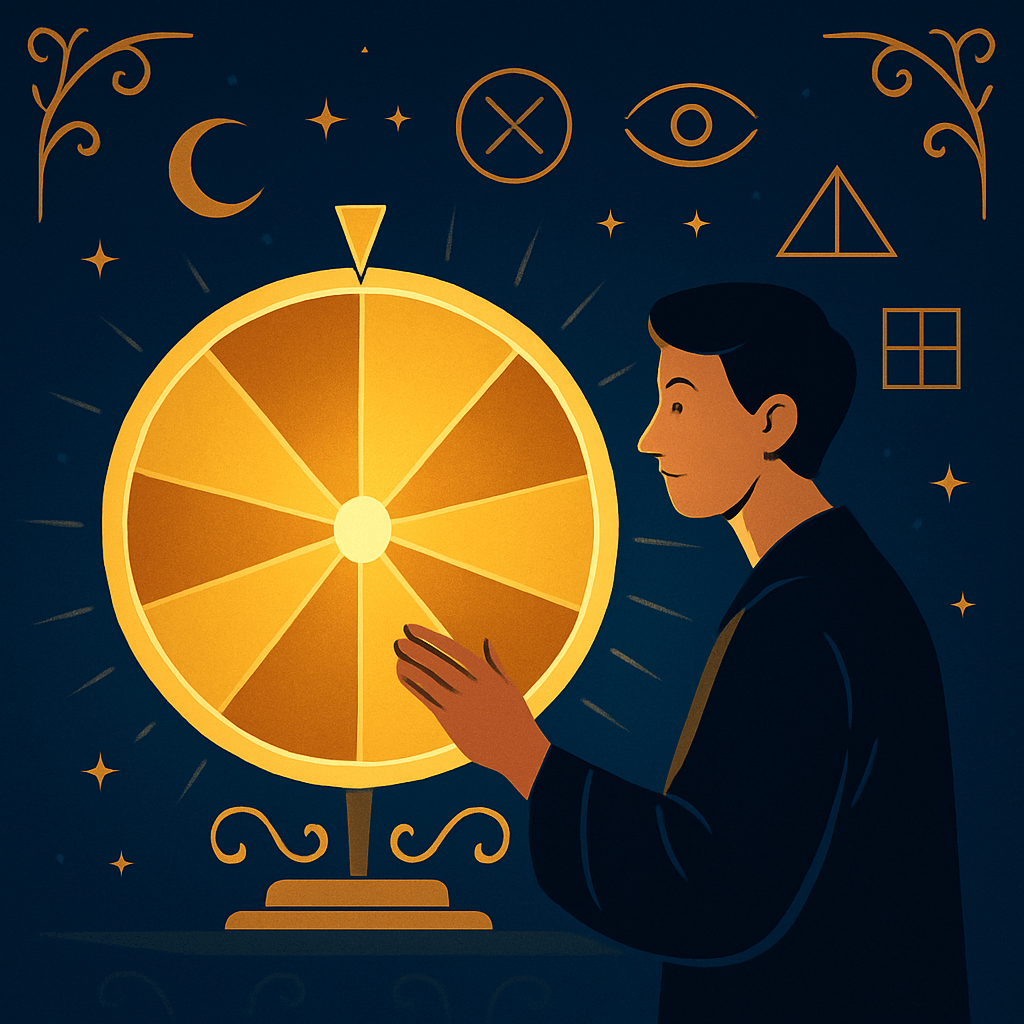
For recurring decisions, random wheels often evolve from mere tools into rituals that provide psychological closure and transform mundane choices into meaningful moments. This ritualistic function is evident in the theatrical elements that accompany many random wheel interfaces—dramatic spinning animations, sound effects, and visual flourishes that serve no functional purpose for the randomization itself.
Anthropologists have long recognized that humans naturally create rituals around transitions and decisions. As Bronisław Malinowski observed in his pioneering ethnographic work, rituals often emerge in contexts of uncertainty to provide a sense of control and meaning. Random wheels provide a ready-made ritual structure that adds significance to what might otherwise be trivial choices. The spinning wheel becomes a modern technological version of ancient divination practices—a way to consult fate that feels simultaneously playful and profound.
This ritualistic aspect explains why many users develop emotional attachments to particular random wheel applications or create personalized wheels for specific decision domains. The wheel becomes more than a tool; it becomes a decision companion that transforms choice-making from a burden into a ceremony.
Evolutionary Perspectives and Modern Solutions
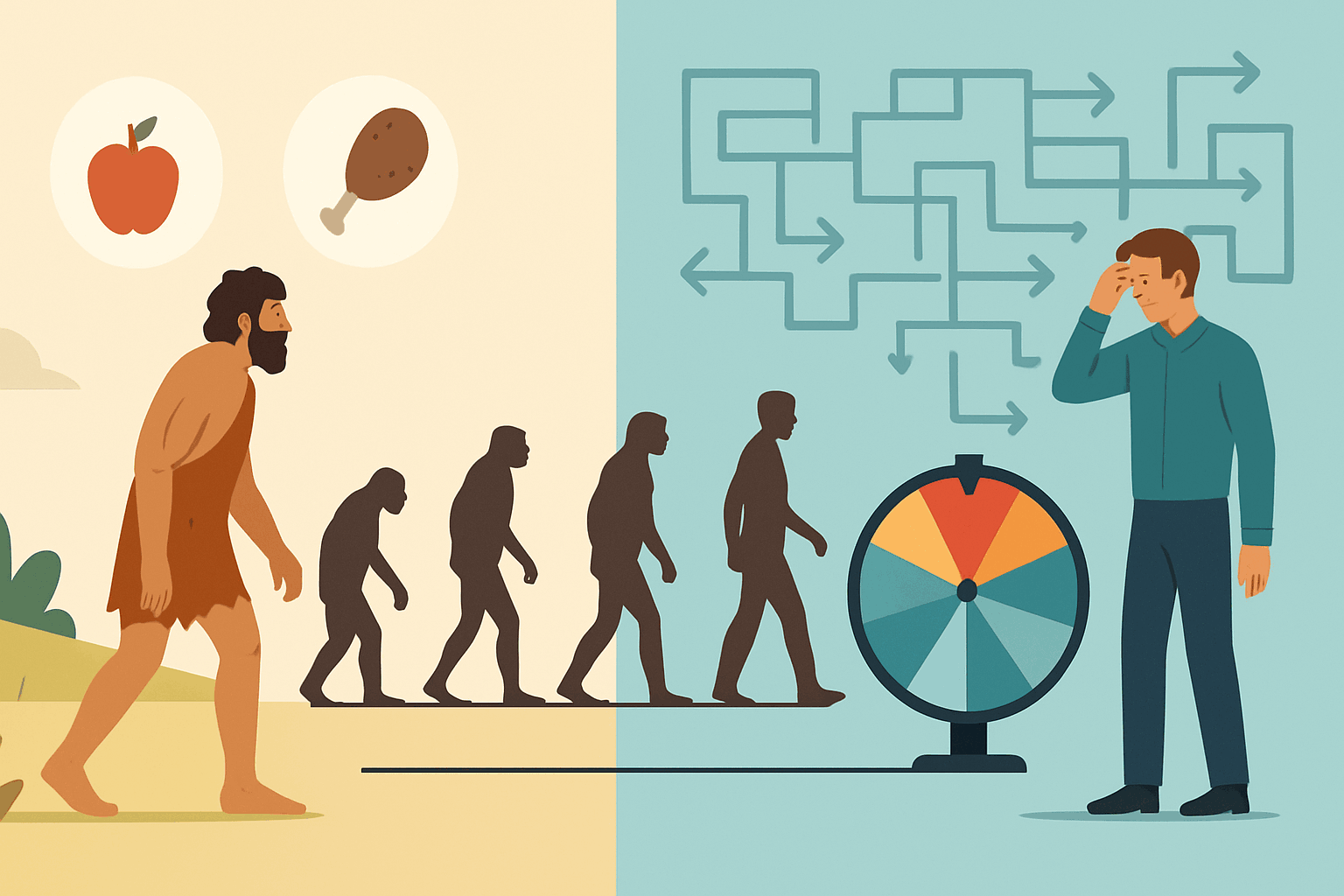
From an evolutionary standpoint, random wheels address a fundamental mismatch between our decision-making psychology and contemporary choice environments. Human decision-making evolved in environments with limited options and clear feedback—conditions vastly different from the option-rich, feedback-poor landscape of modern life.
Evolutionary psychologists suggest that our ancestors rarely faced more than a handful of clearly differentiated options for any given decision. Today, we might choose between dozens of restaurants, hundreds of entertainment options, or thousands of potential products—decision scenarios for which we have no evolved heuristics. Research by Gerd Gigerenzer at the Max Planck Institute for Human Development has demonstrated that human decision-making relies heavily on simple heuristics that evolved for environments with limited options. Random wheels provide an evolutionarily novel solution to this mismatch, allowing us to navigate choice environments that would overwhelm our natural decision-making capacities.
This evolutionary perspective helps explain why random wheels feel simultaneously unnatural and relieving. They represent a technological adaptation to a problem created by technological progress—the proliferation of choice in modern life.
Conclusion: The Future of Randomized Decision Support
As our decision environments grow increasingly complex, tools like random wheels that simplify choice processes while satisfying deeper psychological needs will likely become more sophisticated and integrated into daily life. Already, we see the emergence of AI-enhanced randomization tools that combine the psychological benefits of chance with the efficiency of algorithmic suggestion.
The enduring appeal of random wheels reveals something profound about human psychology: sometimes, the most satisfying way to make a decision is to surrender the choice itself. In a culture that often equates freedom with unlimited options and personal responsibility, random wheels offer a counterintuitive path to psychological liberation—the freedom from choosing.
Understanding the complex needs that drive random wheel usage provides valuable insights not just for developers of these tools, but for anyone seeking to navigate the increasingly choice-rich landscape of modern life. Perhaps the spinning wheel, in its colorful simplicity, offers wisdom about decision-making that extends far beyond its apparent function: sometimes, the best way forward is to let go of the illusion of perfect choice and embrace the unexpected paths that chance reveals.
References
- Schwartz, B. (2004). The Paradox of Choice: Why More Is Less. Harper Perennial.
- Tierney, J. (2011). Do You Suffer From Decision Fatigue? The New York Times.
- Vohs, K. D., et al. (2008). Making choices impairs subsequent self-control: A limited-resource account of decision making, self-regulation, and active initiative. Journal of Personality and Social Psychology.
- Zeelenberg, M., & Pieters, R. (2007). A theory of regret regulation 1.0. Journal of Consumer Psychology.
- Knutson, B., & Greer, S. M. (2008). Anticipatory affect: neural correlates and consequences for choice. Nature Reviews Neuroscience.
- Gigerenzer, G., & Gaissmaier, W. (2011). Heuristic decision making. Annual Review of Psychology.
- Tyler, T. R. (2000). Social justice: Outcome and procedure. International Journal of Psychology.
- Malinowski, B. (1948). Magic, Science and Religion and Other Essays. Beacon Press.
- Patel, A., et al. (2023). Decision fatigue in educational settings: Implications for student engagement and teacher wellbeing. Journal of Educational Psychology.
